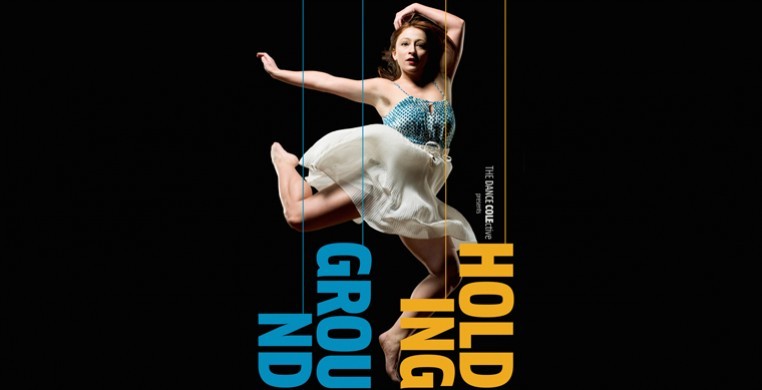The Dance COLEctive uses humor to take a few gentle snipes at popular How-To solutions to life’s little problems, but ultimately asks the big question, “Who Am I and Where Am I Going?” in “Holding Ground,” the company’s season offering at Links Hall at Constellation, through Sunday.
All of the program’s three dance works highlight the group’s commitment to ensemble and the collaborative process in theme-specific pieces. The first and last integrate a refreshing blend of spoken text with group movement, with a solo danced by company artistic director Margi Cole sandwiched in between. The seven ensemble women move together with the ease and coordination of a single organic unit, and yet each dancer conveys a distinctly individual presence on stage. They achieve this aesthetic objective by capitalizing on the flexibility and range that diverse sizes, body types, and personalities can offer, while maintaining a cohesiveness of movement style, vocabulary, and performance dynamics.
Naturalism prevails, with a de-emphasis on technique, and movement that explores core impulse and the ease and flow of the body’s weight, both in space and in relationship to other moving bodies. Movement vocabulary is appropriate to the talents and expressive range of the dancers. Leg and arm swings, spirals and thrusts, falls and lifts, tumbles, rolls, handstands, and an occasional leap or skip, along with a mix of pedestrian locomotion and quasi-pantomime gestural material, appear tossed off and nonchalant rather than presentational. Performance quality is uniformly clean and fresh, with a “here we are, take us as you see us” honesty, from Margi Cole’s informal, pre-performance introduction to her confessional commentary in the final piece.
These works are not about dance per se, but rather use dance to embroider, illustrate, and focus their spoken ideas: how we define and identify ourselves. The mesh of ideas and choreographic content varies. Sometimes, the dancing dovetails with spoken text, as with the literal gesture of a hand pressing on the throat, or two hands clutching the forehead, “I am talking too much, thinking too much,” then effectively evolving into an expanded, abstracted movement sequence. At other times, movement seems unrelated, perhaps deliberately so, and merely accompanies the text in parallel interludes.
Most interesting and fully-developed of the three works is the final group piece, “Creative Candor” (premiere) under Cole’s “choreographic direction.” Perched on a stool at the far downstage right corner, she speaks directly to the audience with the relaxed, personal address of talking to a friend over coffee. There is both candor and intimacy in how she reveals the creative context for the piece, giving us an inside look at her process and what’s on her mind these days. Adapting to limitations of time, space, and money, Cole explains, she challenged herself and her collaborative ensemble to “get the most out of a little.” Together, they devised a series of duets that use seven interchangeable movement phrases derived from key words, such as “rainbow,” “soccer ball,” “turtle,” “starfish, “pony ride,” etc., all of which the dancers illustrate in movement while Cole speaks. Jumping off from surveys the group conducted with each other, each dancer introduces herself with “I am,” followed by her name and the initials indicating her personality “type” according to the Meyers-Briggs Personality Assessment Index, which becomes both a humorous and cynical commentary on external labeling versus inner perceptions of being-states.
Interspersed with pedestrian, block ensemble movement across diagonal planes, individual dancers emerge to tell their stories. On the surface, “It was a test,” tells of a mother who never coddled her children, a girl playing hooky from the Prairie State Exam, a woman without a home of her own who crashes at different friends’ apartments, but the underlying stories are of moral conflict, the ironies of test results, and a quest for the truth of the “the self.”
Here, the dancers use balance and counterbalance in perfect synchronicity with the dilemmas of the lives they self-narrate. The spoken question, “Who am I?” and its eventual conclusion that “you just can’t answer who you are because you don’t know,” verges on the sophomoric, but the movement is sensual and compelling with a series of duets that employ body contact, leverage and opposition, and an ingenious variety of seemingly effortless lifts to show the complexity of relationship. Zoe Keating’s string trio music provided an effective emotional thread, without sentimentality, to the dancers’ neutrality.
Alluding to her creative process and the struggle for truth, Cole concludes, “It was more than a test,” and she ends the piece in a kind of existential limbo of longing for answers that have yet to be revealed, an apt summary of the concert as a whole.

